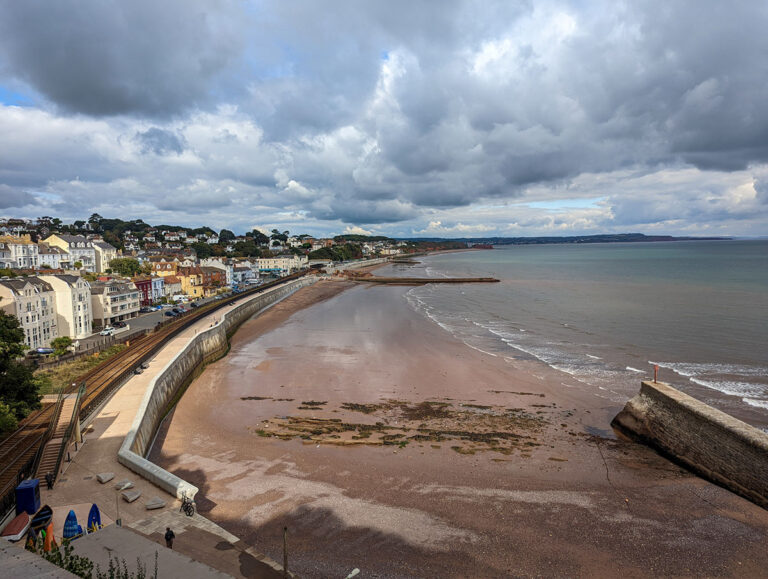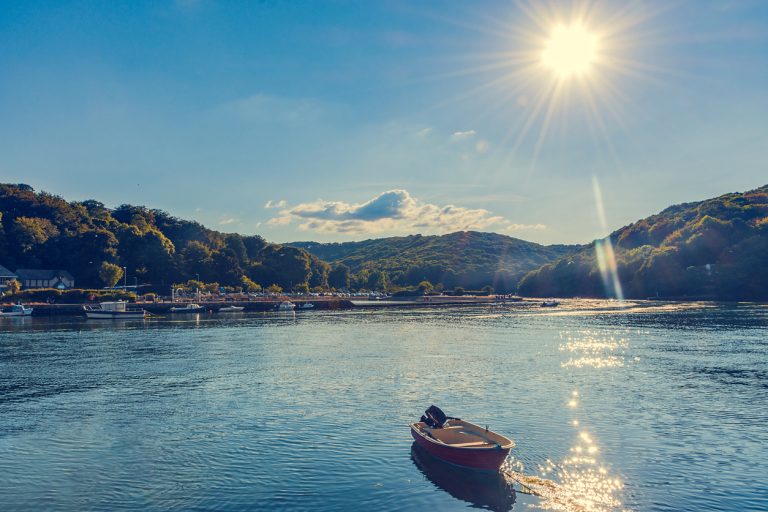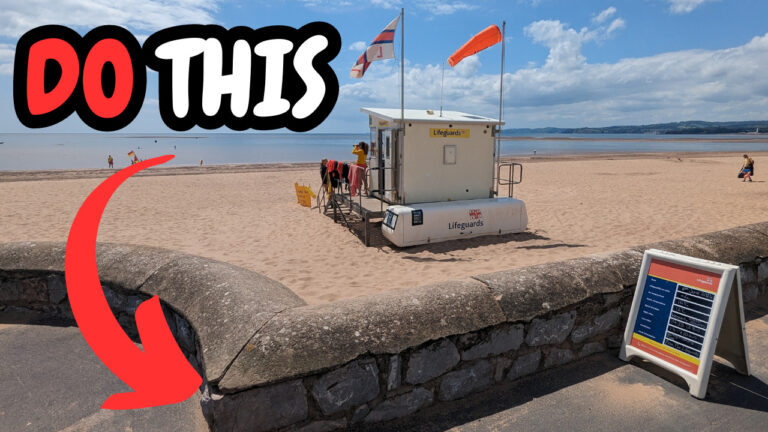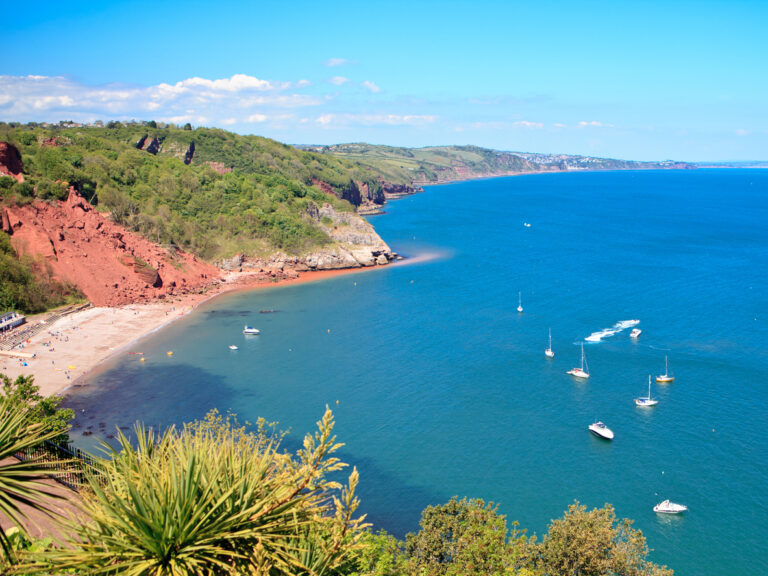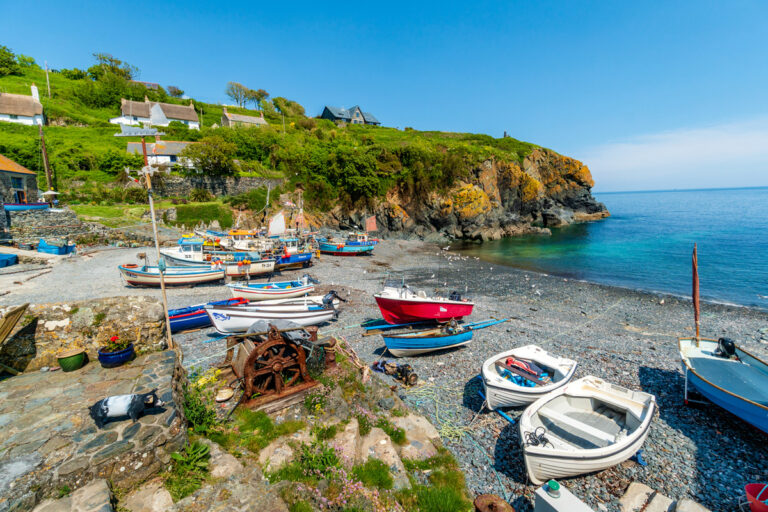18 Fascinating Cornwall Landmarks: The Old and New!
If you are planning to visit South West England, take a look at this list of Cornwall landmarks!
Most of these are popular tourist attractions that you can base your entire holiday around, as well as some interesting places to keep an eye out for as you explore the region.
From farm buildings to beaches to ancient castles, there have been so many landmarks that Cornish people have used as landmarks throughout history.
If you’re wondering what the best landmarks in Cornwall are, this post will help! Here are some of the best landmarks, old and new, to make sure that you visit while you’re in the Duchy!
The Best Landmarks in Cornwall
The Eden Project
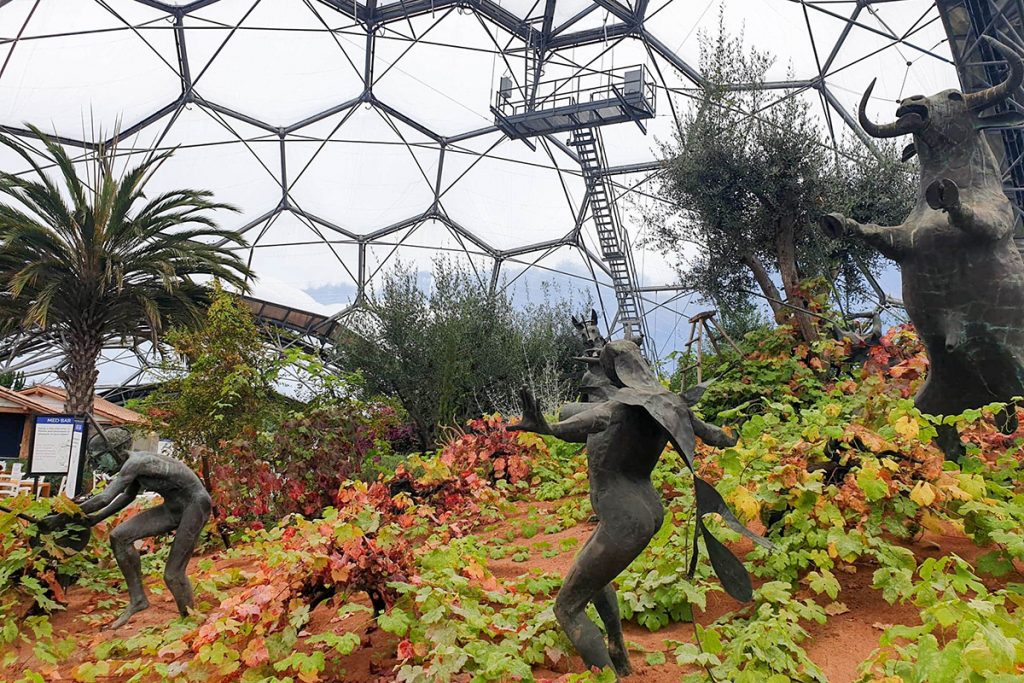
The Eden Project is one of the more significant landmarks in Cornwall. Sitting in two 20th century china clay pits, the Eden Project consists of two large biomes.
Each biome mimics a natural environment; one is a rainforest, and another has Mediterranean flora and fauna. This means that you can quite literally walk through the jungle in Cornwall! There are also lots of Cornish plants outside.
The project aims to educate people about conservation and what we can do from the UK to protect countries overseas.
The Eden Project is a top-rated attraction, especially in the summer holidays. If you are visiting then, make sure you book ahead! It costs £30-£35 for an adult ticket and £10 for a child.
St Michael’s Mount
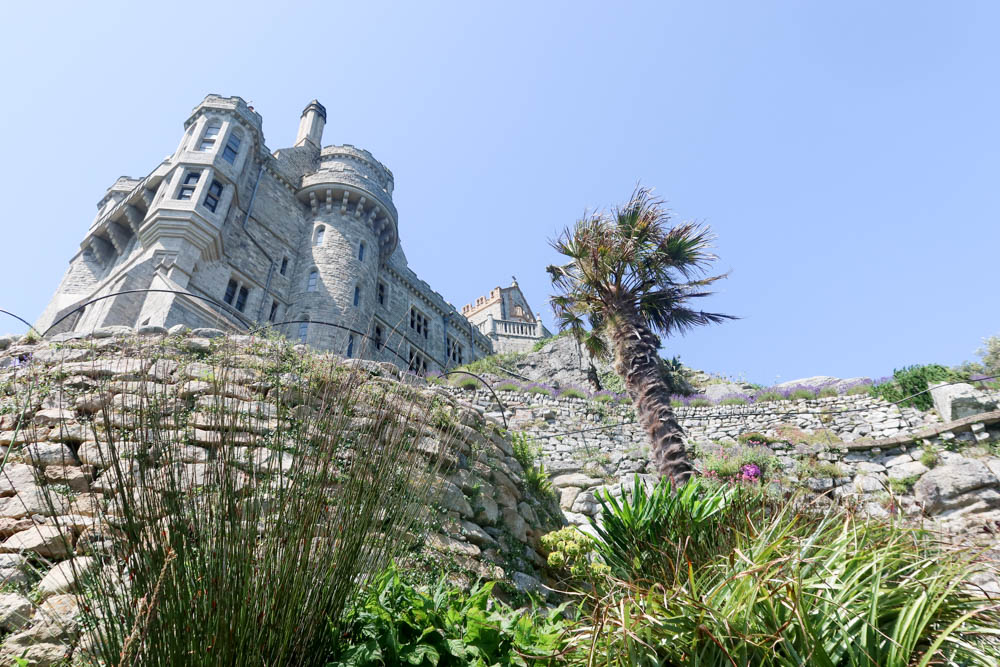
Sitting on Mount’s Bay, St Michael’s Mount is one of the most popular Cornish landmarks. This landmark is an artillery fort with impressive gardens sitting on top of a beautiful island. It’s one of the best things to do in Penzance and one of the most popular places in Cornwall to explore.
Since prehistorical times, the island has had mythical and religious connections, and the castle was built in the 12th century.
It was involved in the Civil War in the 17th century but has since had a much more peaceful existence with the D’Aubyn family residing there for the last few centuries.
The terraced gardens have beautiful exotic plants and sweeping vistas of the sea. You can take in impressive reviews of Mount’s Bay by the castle – look out for Penzance, Mousehole and Newlyn.
There is a St Michael’s Mount gift shop and restaurant on site.
For booking enquiries about St Michael’s Mount, visit the National Trust website, or read my blog post about visiting St Michael’s Mount.
Tintagel Castle

Tintagel Castle is one of the best castles in Cornwall and an iconic landmark. Sitting on Tintagel Island, a rocky outcrop near Cornwall’s north coast, this castle is a place of myth and legend.
King Arthur was allegedly born in Tintagel Castle, and nowadays, there is a statue of Merlin in the grounds. This legend was pushed forward in the Victorian era when tourism to Cornwall grew; it may or may not be accurate, but there’s no denying that it feels like a very spiritual place.
Tintagel Castle dates back to the 13th century, when Richard, Earl of Cornwall, owned it. Despite it being his property, he didn’t visit it all that much – it was usually just occupied by staff. When Richard did visit it, there would be grand celebrations!
You can still see the ruins of Tintagel Castle while walking around the property. You will also take in some epic coastal views of this amazing area of Cornish coastline, one of the most stunning parts of the South West Coastal Path.
I wouldn’t recommend Tintagel Castle for people with limited mobility, as there are lots of stairs and uneven ground.
There is a cafe on site which serves delicious afternoon teas and other meals and snacks.
Whether the legend is true or false, Tintagel Castle is definitely one of the most famous landmarks in Cornwall! Here’s my full guide to visiting.
Land’s End

Land’s End Landmark Attraction is a must-visit landmark in Cornwall.
With breathtaking views across the Atlantic Ocean, Land’s End is the furthest south-westerly point in the UK. It definitely feels like you are standing on ‘the end of the world’ while here, with crashing waves and dramatic cliffs.
However, Land’s End is very popular and kind of commercial now. There are lots of things to do on Land’s End, from learning about Arthurian legend at Arthur’s Quest, to getting your photo taken with the iconic Land’s End sign.
It’s also worth visiting Penwith House, a historic temperance house that nowadays houses a shop, and the ‘First and Last Cafe’ – which is, as the name suggests, the first or last cafe in the UK!
You can also eat at Land’s End Restaurant, which serves hot and cold meals.
There are some farm buildings close to Land’s End, and guests are welcome to see the animals.
Lizard Point
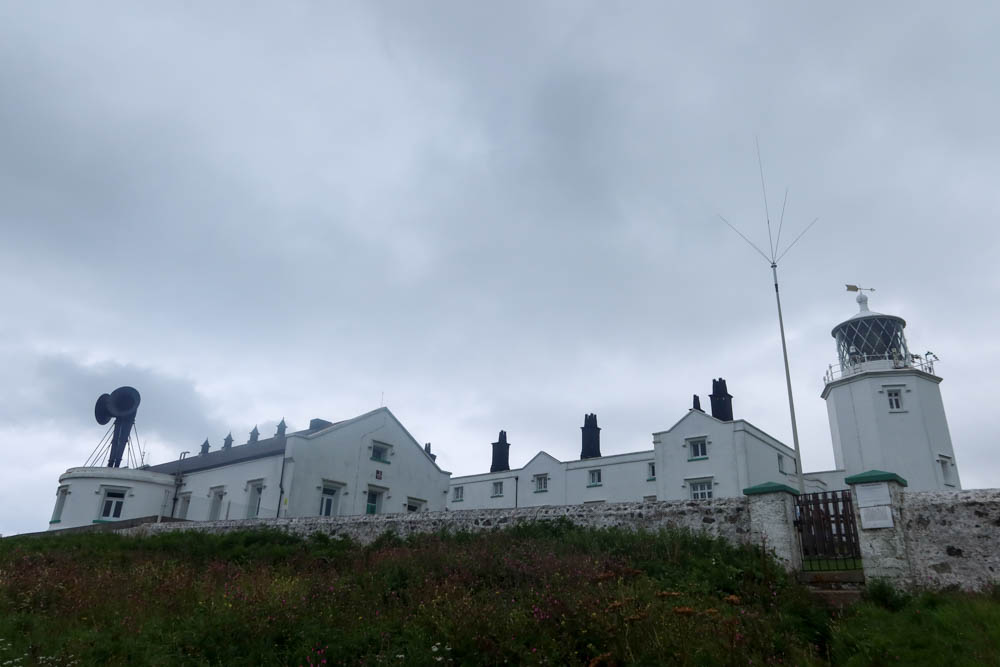
Lizard Point is another landmark point in Cornwall – it marks the furthest south point in the UK and sits on the end of the Lizard Peninsula.
The Lizard Peninsula is mostly agricultural, with lots of farm buildings wherever you go, but it also has a stunning coastline. This terminates in Lizard point, which has a lighthouse that kept watch for ships lost at sea and the furthest south point in the UK.
As well as the stunning views, there is the furthest south cafe in the UK, an art shop, and a wonderful walking trail to Kynance Cove.
There isn’t as much to do here as at Land’s End, but it’s still a beautiful place to admire.
You can read about all of the best things to do on the Lizard peninsula here.
Kynance Cove
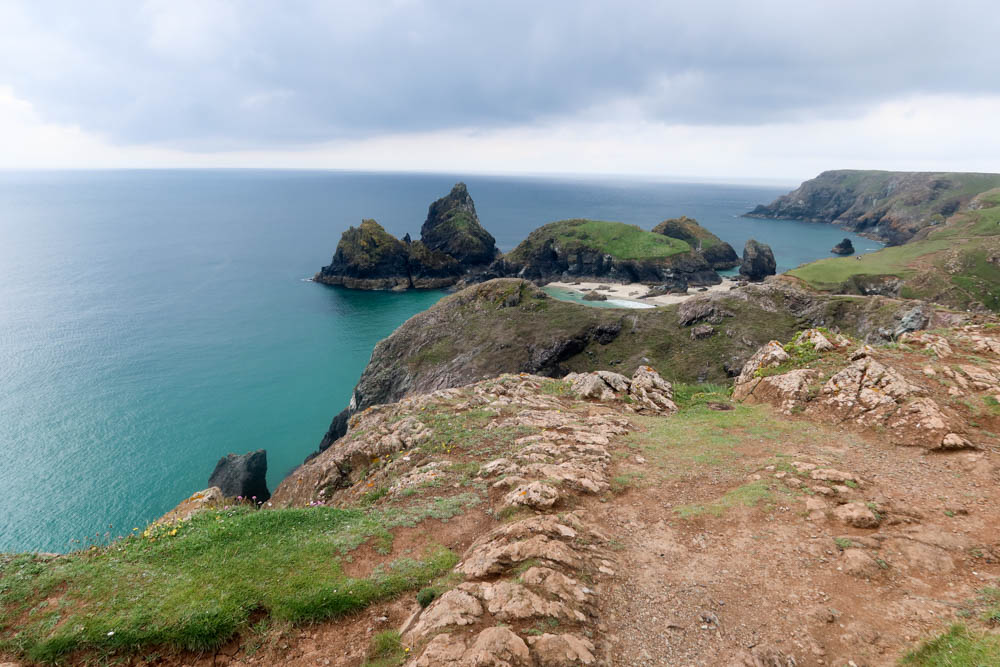
Kynance Cove is a beach on the Lizard Peninsula, but it is one of the most famous landmarks in Cornwall. It is a place of Cornish natural beauty, with brilliantly blue waters and stunning white sands. On a sunny day, you’d be forgiven for thinking you’re somewhere in the Caribbean!
You can hike up the South West Coast Path for spectacular views of Kynance Cove or enjoy the beach at sand level.
Do be careful when exploring the beach, as the tides can cut parts of it off and there is no lifeguard. Ensure that you are aware of the tide times and don’t swim unless you are very experienced with wild swimming and are prepared to do so at your own risk.
Kynance Cove can sometimes close in the summer holidays – it gets that busy! So if you are visiting during late July and August, I would recommend heading to Kynance Cove early.
There is a cafe, car park and toilets on site.
See my full guide to Kynance Cove here.
Brown Willy

Bodmin Moor is a foreboding and wild place with plenty of interesting historical and geological features.
This granite moorland is part of the reason why Cornwall has been such an isolated place throughout its history, and it is no surprise that the moor is the site of legendary tales and mythology.
Brown Willy (Cornish name: Bronn Wennili, meaning hill of swallows) is the highest point on Bodmin Moor and in the whole of Cornwall. Therefore, it’s unsurprising that it has been a landmark for centuries!
It has cairns that date from the Bronze Age and has been considered a sacred place for rituals for thousands of years.
You can climb up Brown Willy and get some fantastic views of Bodmin Moor and northeastern Cornwall from the top – on a clear day, you’ll be able to see both coasts!
Rough Tor
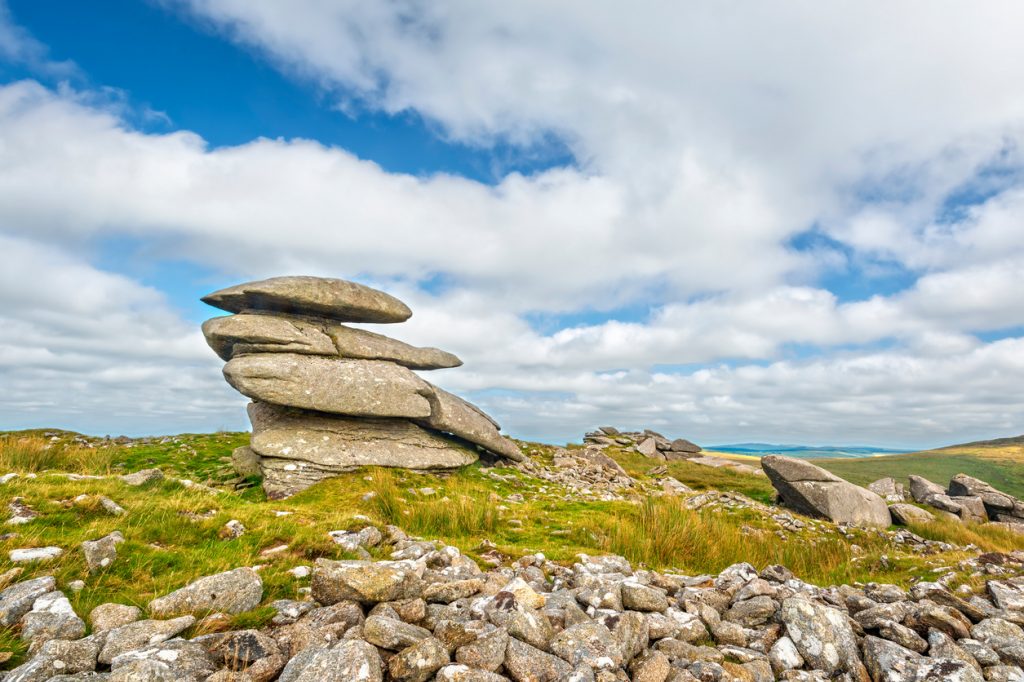
Rough Tor is the second tallest hill in Cornwall and a popular place to visit on Bodmin Moor. Like Brown Willy, it has been a site of interest for centuries and is a popular landmark in Bodmin.
There is logan stone at the top, which is a stone that has been weathered by the elements so much that part of it only just balances, and it ‘rocks’. Logan stones are commonly found throughout Cornwall and in Dartmoor in Devon.
There are also a lot of Bronze Age Hut Circles on Rough Tor, nodding to the historical significance of the area.
Like various other Cornish words, Rough Tor is not pronounced how it is written. Instead of ‘rough’ like ‘cough’, you should say ‘row’ like ‘cow’.
If you want to explore Brown Willy and Rough Tor, here is a good walking route by iWalkCornwall.
Launceston Castle

Launceston Castle sits in Launceston, near the border of Devon and Cornwall. It is a typical example of a Norman Castle, built not long after the Norman conquest. Therefore, it has been a Cornish landmark for over 1000 years!
The Earl of Cornwall used Launceston Castle as his administrative headquarters to keep track of landowners from the surrounding countryside.
It is nowadays owned by the English Heritage and is a popular building to visit in East Cornwall. You can reserve tickets to visit Launceston Castle here.
Geevor Mine

There are lots of mines throughout Cornwall, and the Geevor Tin Mine is one of the best to visit. Situated in the small village of Pendeen near St Ives, Geevor Mine was a working tin mine from the 18th century until the 1980s.
There is lots to learn about here, from the history of tin mining and how it could be a very hazardous profession, learning about tools used to mine, and reading about mining culture in The Dry.
It’s a fascinating snapshot of mining culture through time, from what it was like in the 18th century to a modern standard. This industry was significant to Cornwall for centuries, so it’s well worth learning about while you’re here!
For more information and booking enquiries, visit the Geevor Tin Mine website.
Minack Theatre
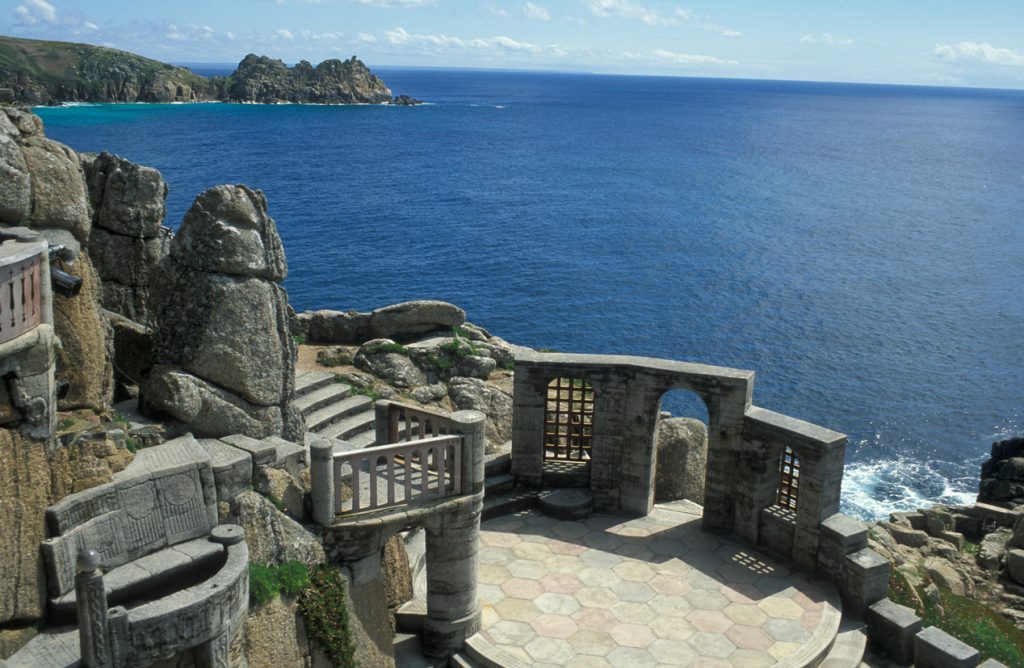
Situated in Porthcurno in far west Cornwall, the Minack Theatre is a Cornish landmark like no other. This theatre wouldn’t look out of place in Rome, but it’s undeniably Cornish; it was created by Rowena Cade in the 1930s. She almost singlehandedly built the structure that you see today!
With a glorious backdrop of the crystal clear Atlantic Ocean and the brilliant white stones, the Minack Theatre is a must-visit destination in West Cornwall. You can either visit just to look around or book tickets for a play.
Pendennis Castle
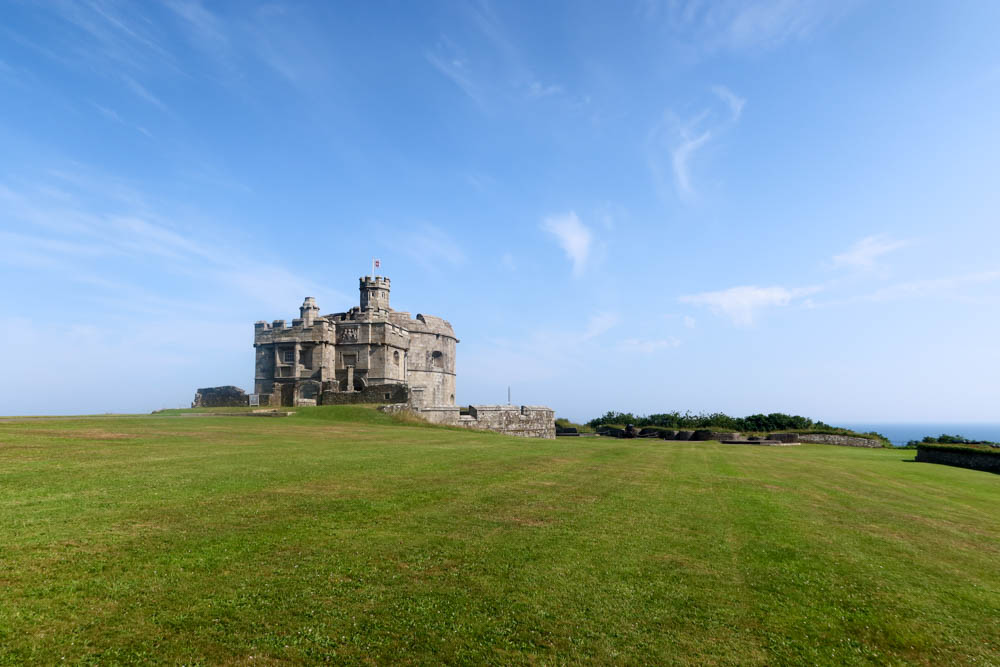
Pendennis Castle is one of the best things to do in Falmouth and one of the most famous landmarks in Cornwall!
It was built by Henry VIII in the 16th century to protect this area of Cornish coastline. He wanted to establish mighty fortresses around the south coast to protect from foreign invasion – at the time, Britain was under risk of attack from both France and Spain. He also built St Mawes Castle on the other side of the Fal.
The castle was used throughout history, especially during both World Wars, where it was a training camp and troops used the battery to look out for German ships and planes.
Pendennis Castle is one of the best things to do in Cornwall in the rain, but there are some spectacular views from Pendennis Castle over the Fal Estuary when it’s nice weather.
Here’s my full guide to Pendennis Castle.
National Maritime Museum Cornwall
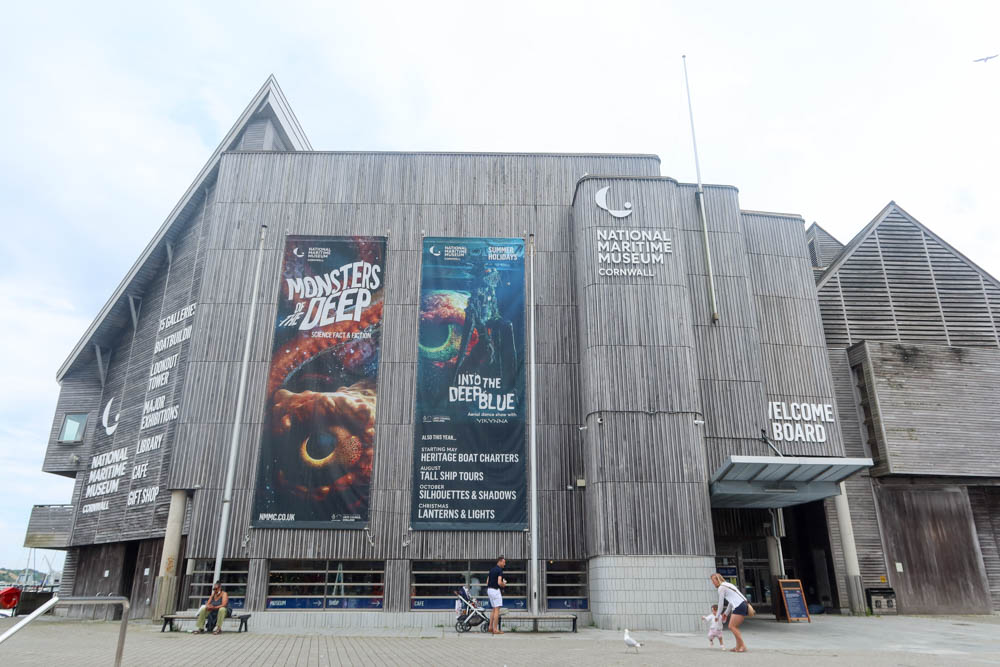
Another of Falmouth’s best attractions is the National Maritime Museum Cornwall. This is a landmark within Falmouth, as it sits in a large imposing building – but it’s what’s inside the museum that makes it so unique.
The National Maritime Museum Cornwall is an incredible exhibition about the UK and Cornwall’s unique connection to the sea.
There are exhibitions about boats that have made incredible journeys, rare marine animals, and a display about the Falmouth Packet, the postal system that connected Falmouth to the rest of the world.
It costs £14 to visit the museum, and you can use the same ticket to re-enter any time within a year.
TATE St Ives
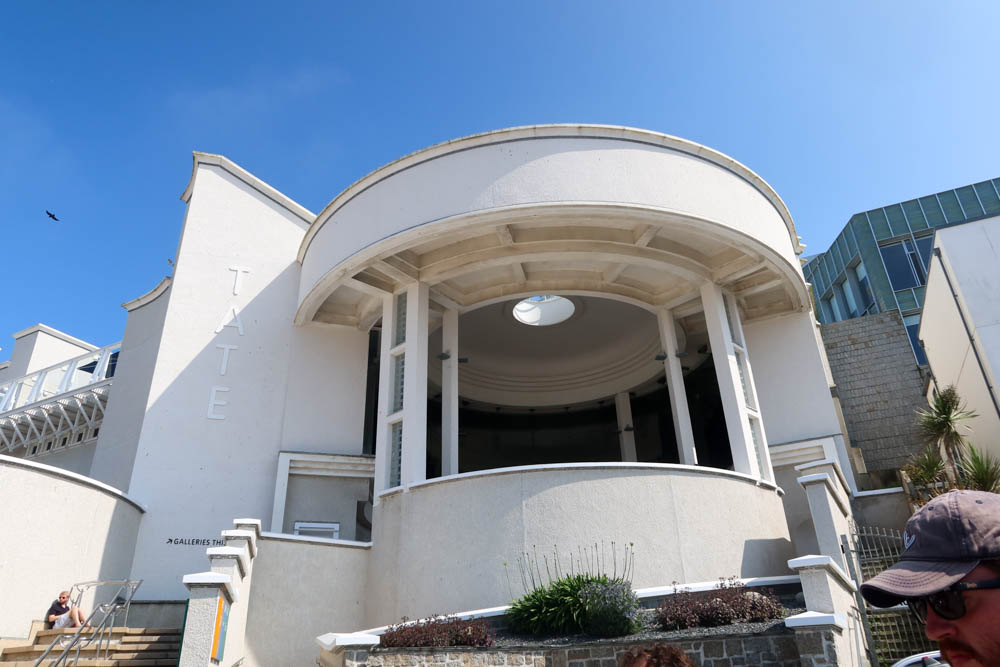
There are so many things to do in St Ives, including visiting its stunning beaches and enjoying its tantalising food scene. However, St Ives is also famous for being a very arty place – and there’s nowhere better to appreciate this than at the TATE.
This art gallery has become something of a local landmark. It is located in the old gas works – the building dates back to 1835. It has had a huge makeover since the 19th century and nowadays features various works of art by local, British and international artists.
If you’re interested in art galleries, the TATE is a must-visit. It will help you see how St Ives became such a popular artists hub and continues to inspire countless people today!
Bedruthan Steps
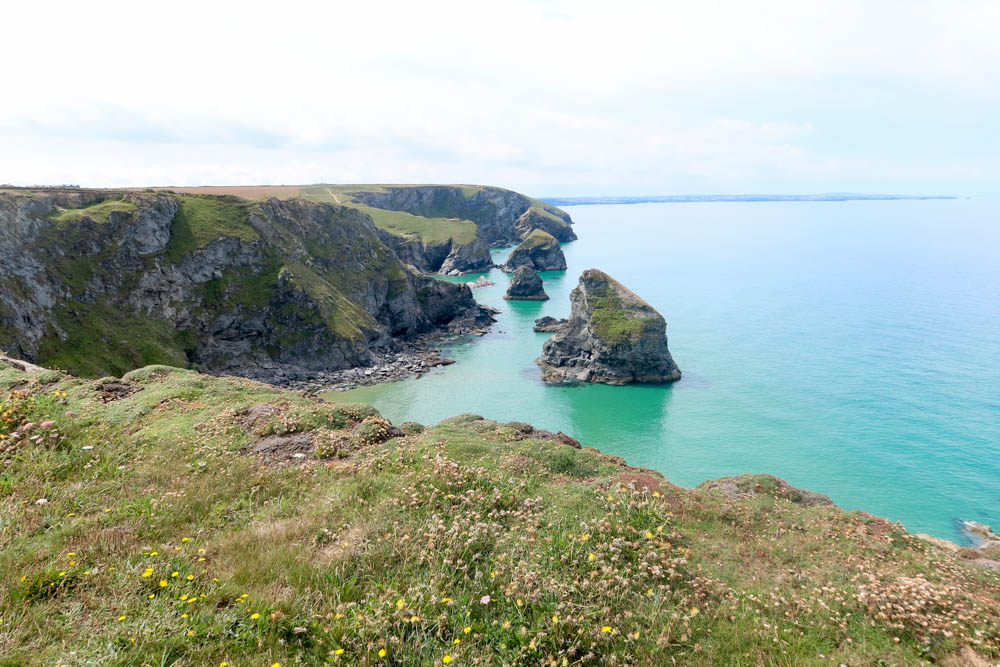
Bedruthan Steps are a collection of stacks and stumps that jut out from the coast of Cornwall. These rock formations were, in Cornish mythology, stepping stones used by the giant Bedruthan to get across the sea.
However, they are more likely to be interesting geological formations due to softer rock eroding and harder rock being exposed.
They are among the most famous Cornwall landmarks – they have been popular since Victorian times, when Newquay first became a holiday resort. Nowadays, they are one of the best beach areas near Newquay!
Bodmin Jail
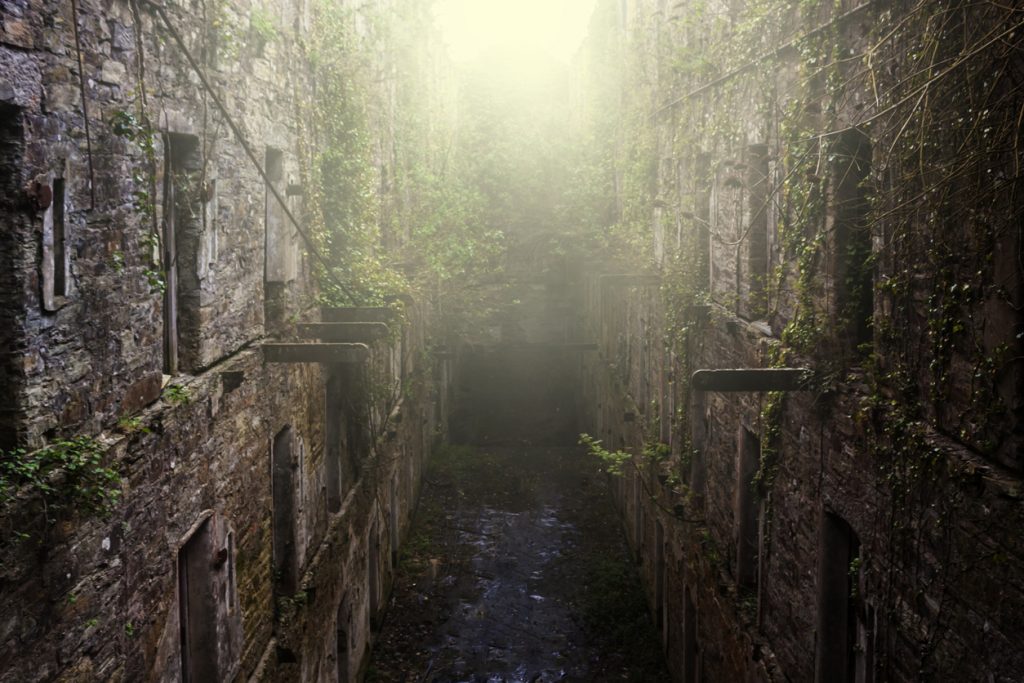
Bodmin Jail sits in the centre of Bodmin town, and it has been an imposing structure for centuries.
It opened in the late 18th century and was extended in the 19th century – it is a typical example of a Victorian prison with gruelling punishments and sordid living quarters.
However, Bodmin Jail improved their quality of life marginally compared to other jails in the UK, which eventually progressed to the modern standard of prisons today.
You can learn all about Bodmin Jail’s history by doing a self-tour or guided tour. The self-tour will take you around the prison, including a 3D interactive experience that details Victorian Britain’s harsh realities of crime and punishment.
Alternatively, a guided tour will give you some more information about the jail, including some background stories about individual prisoners.
Bodmin Jail is one of the best Bodmin attractions, whether you are in Cornwall for your summer holidays or an off-season escape – it certainly has an air of mystery during the colder, darker months!
Stone Circles and formations
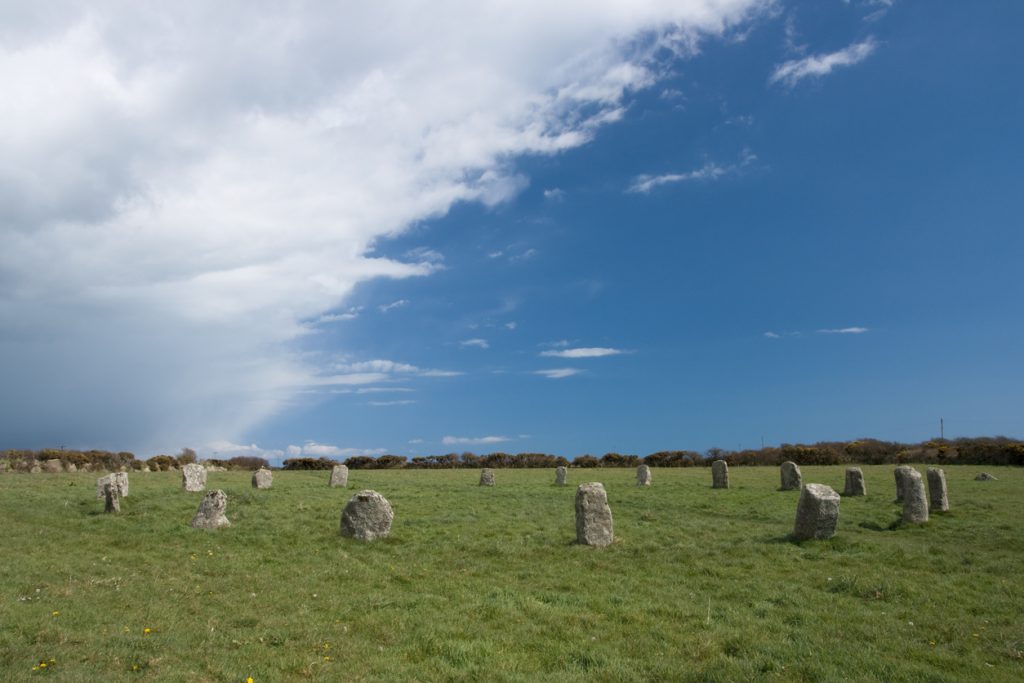
Whether you are spending your summer holidays in Cornwall or visiting during the off-season, it’s worth trying to find some of the Duchy’s stone circles. These ancient landmarks have been used throughout the centuries for help with directions and navigation.
- Men-An-Tol is one of the most famous. This is located close to Penzance and consists of four stones, one being an upright circle with a hole in the middle, which is very rare. These could be the remains of a stone circle, or they could have been placed there for use in rituals.
- Another interesting stone formation near Penzance is Lanyon Quoit. This was once big enough for a horse and carriage to pass underneath, and it is thought that it was a burial chamber or mausoleum, or some people believe that bodies were placed on top for a sky burial (which means that birds ate them).
- The Merry Maidens are perhaps the most famous stone circle in Cornwall, and they are located close to Lamorna. Legend has it that the Merry Maidens are local girls who were turned to stone after breaking the rules on the Sabbath!
Botallack Mines
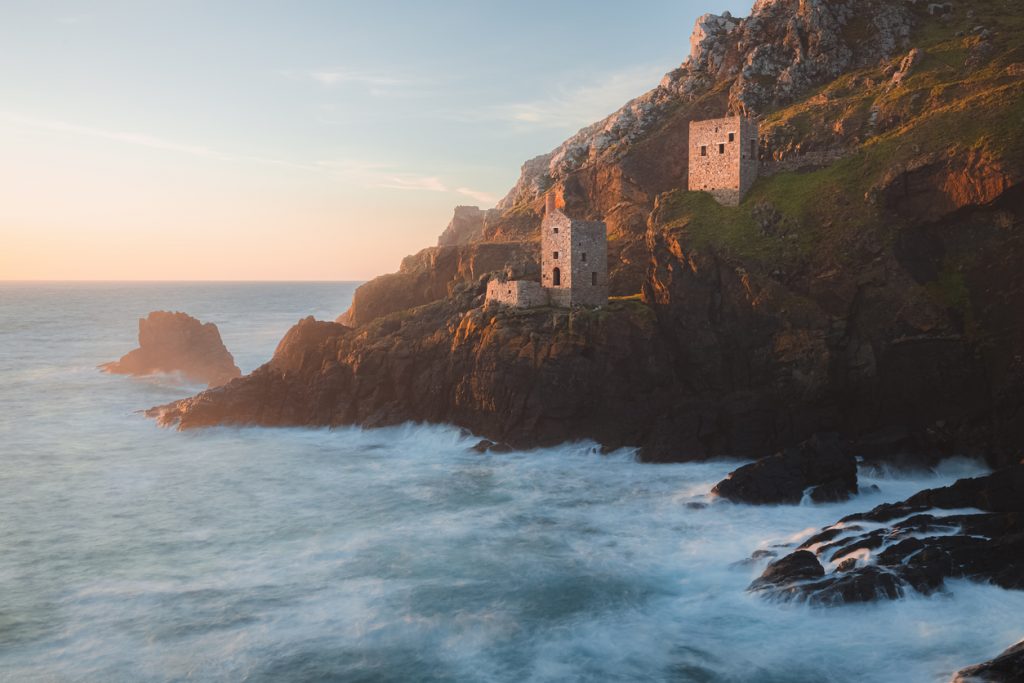
The Botallack Mines stand out from the craggy cliffs that they protrude from. Located in the St Just area, a region that is heavily connected to mining heritage, the engine houses of the Botallack Mines are a fantastic place to learn about Cornish mining heritage.
You can do a mining heritage walk around the area, visit the count house workshop, and photograph the engine houses. On a clear day, you can look out to see and make out the Isles of Scilly!
Interesting Cornwall Landmarks
From ancient castles to modern attractions, each of these Cornwall landmarks tells a little more of the Duchy’s story.
So whether you want to learn about tin mining, ancient legends or Cornwall’s unique relationship to the sea – or indeed, if you just want to see some remarkable sights, you could easily plan a Cornwall trip around these landmarks.
See my Cornwall road trip itinerary for more trip planning ideas!

